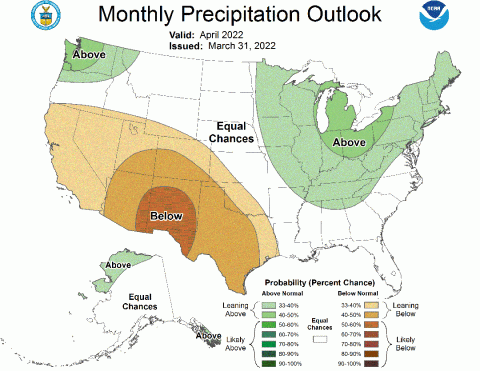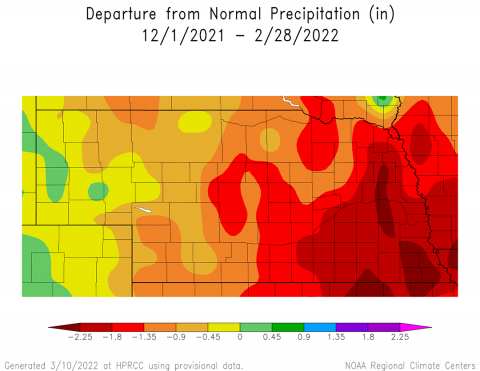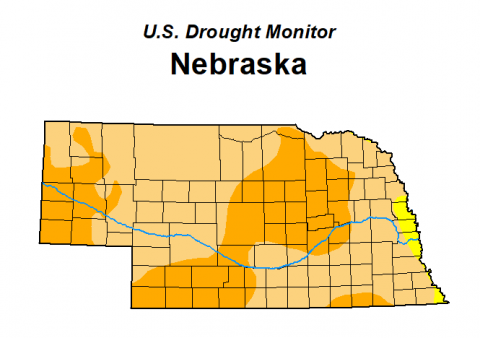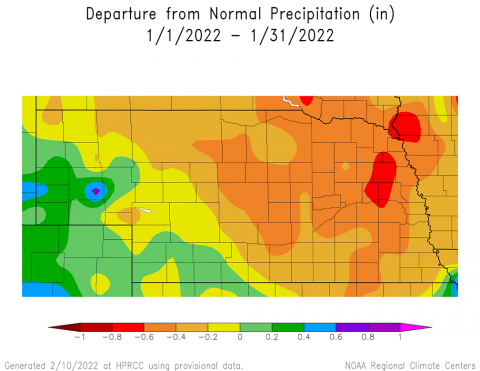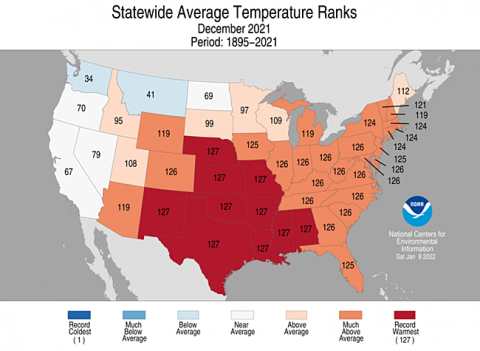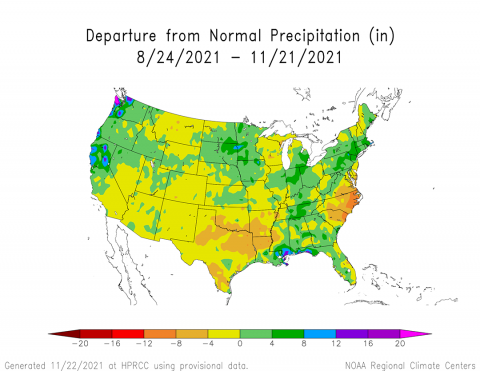Weekly Agricultural Weather Update - April 5, 2022
April 7, 2022
With the March 31 CPC outlook, temperatures in Nebraska are still expected to be above normal through April, but precipitation chances have improved.
CPC Latest Outlooks Offer Little Drought Relief
March 23, 2022
The latest CPC outlook reports above normal temperatures and below normal precipitation are expected to continue in Nebraska until the end of summer.
Winter 2021-22 Recap
March 23, 2022
According to preliminary findings by the National Center for Environmental Information, the 2021-22 winter season ranked as fourth-driest on record for the state of Nebraska.
Dryness Continues as We Round Out Winter
March 9, 2022
The primary weather story this February was the continued lack of precipitation leading to expansion of drought, which covered 38% of Nebraska at the start of February and 98% by early March.
Spring 2022 Weather Outlook
March 8, 2022
With chances of below normal moisture and above normal temperatures through the next three months, Al Dutcher reports drought conditions across western Nebraska could rapidly intensify this spring.
Lack of Snow, Dryness Continue Winter Trend
February 14, 2022
The dryness of this winter season is expected to continue in Nebraska, as Nebraska State Associate Climatologist Al Dutcher shares his outlook for the rest of February and March.
Warmest December on Record, Derecho Highlight Start to Winter
January 20, 2022
Nebraska State Climatologist Al Dutcher reviews the unique weather events that ushered in the winter season of 2021-22 and shares his forecast for January.
Winter Weather Outlook 2021-2022
December 2, 2021
Al Dutcher, Nebraska State climatologist, shares his analysis of the latest weather outlook, which indicates that winter weather of 2021-22 will be more active than last year.
